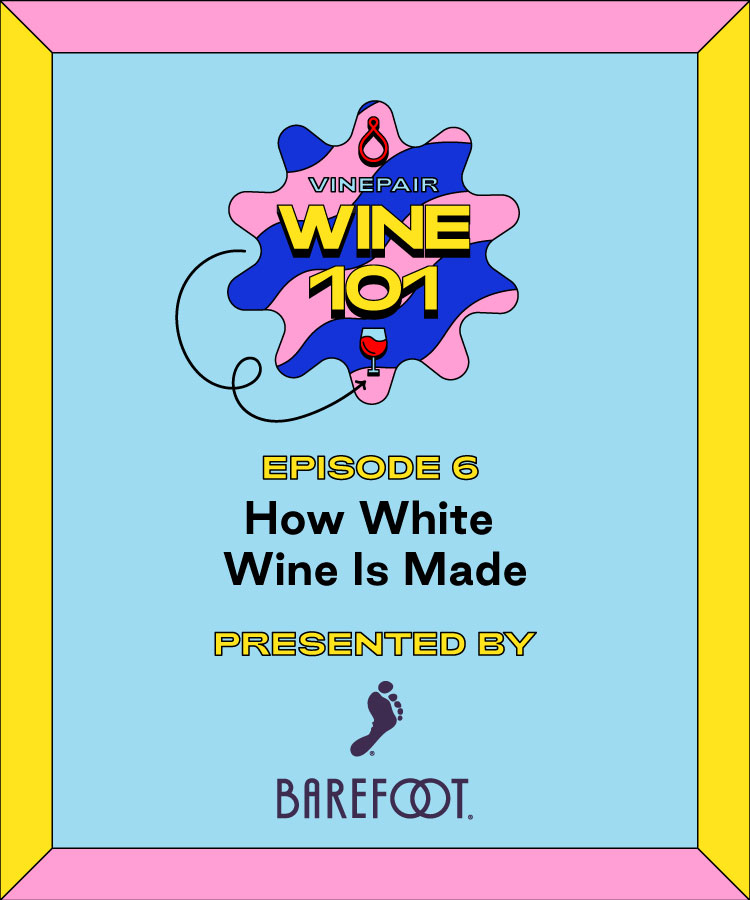
Inspired by one of VinePair’s most popular site sections, the Wine 101 podcast takes an educational, easy-to-digest look into the world of wine. This week’s episode is brought to you by Barefoot Wines. Barefoot believes that life is more fun when everyone is together. That’s why Barefoot has something for everyone, with a diverse collection of delicious refreshing wines that are sure to have you reaching for another sip. Smooth Pinot Noir, bright Riesling or brunch-worthy bubbles: Get Barefoot, and have a great time.
Welcome back to Wine 101. In this episode, VinePair tastings director Keith Beavers explains techniques that are crucial to white-wine production. Beavers first walks through types of grape skin pigments, such as carotenoids like beta-carotene found in carrots, as well as anthocyanin, the red/blue pigment found in fruit such as blueberries. These compounds make a notable difference during white-wine fermentation.
Beavers also explains the impact of malolactic fermentation on white wine, describing the cellular interactions that leave wine with more malic acid, as found in apples, or lactic acid, as found in yogurt or milk — and, of course, how these affect the flavor of the wine you drink.
After listening to this episode, Wine 101 subscribers will come away with the fundamentals of white-wine fermentation, including why white wine can actually come from white or red grapes.
Follow Keith Beavers on Instagram
